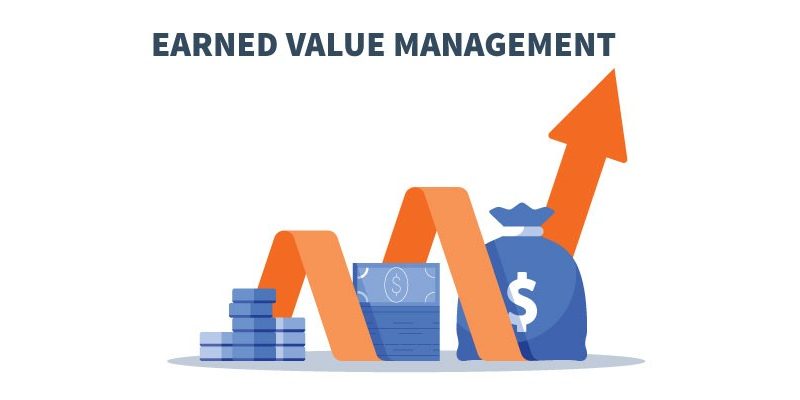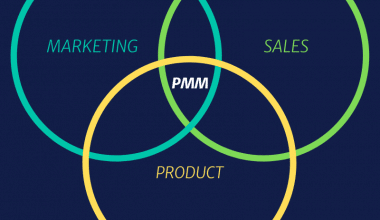As a project manager, you must be familiar with instances in which your projects unexpectedly find themselves in the gray zone between success and failure. Sometimes your project remains within budget but goes past schedule. It can stick to the deadline but at the expense of a high burnout rate in other situations. Despite rigorous planning, a lack of performance tracking against variables such as cost and time contributes to project failure. So, if you’re looking for more specific goals for success, there’s some excellent news for you.
Earned Value Management, or EVM enables you to clearly see ‘where a project is’ and ‘how far the trip ahead is. This post will go over the fundamentals of EVM. So, before we get too further into this, let’s define earned value management.
What is Earned Value Management (EVM)?
The Earned Value Management EVM approach enables managers to measure project performance against the project baseline in a systematic manner. It combines the timeline, costs, and scope to evaluate planned vs. actual and discovers any discrepancies.
EVM assists project managers in identifying and correcting differences so that projects can be completed on time and under budget. So, it also aids forecasting, allowing project managers to make necessary adjustments.
Concepts of Earned Value Management EVM and Key Performance Indicators
The value of work is equal to the expenditures planned to complete it, according to the core premise of EVM. So, Earned Value Management systems have three data sources, which are as follows:
- Planned Value (PV): The projected value of work that is anticipated to be completed within a specified time frame.
- Earned value (EV): The approved budget for work accomplished before the deadline.
- Real Cost (AC): The actual costs incurred for work done by the deadline.
EVM can be used to analyze the schedule and cost performance of your project based on the following critical indicators:
#1. Schedule variance (SV):
This is the difference between the actual work done and the estimates. It indicates whether or not the project is on track using the formula SV = EV – PV. A variance of 0 indicates that the project is on track. So, a negative or positive variance indicates that it is behind or ahead of schedule.
#2. Cost variance (CV)
This is defined as the difference between Earned Value EV and Actual Cost AC. It determines whether or not the project is within budget by applying the formula CV = EV – AC. So, a deviation of 0 indicates that the project is staying within its budget. A negative or positive variance implies that the project is going over or under budget.
#3. Schedule Performance Index (SPI)
The schedule performance index (SPI) is the ratio of Earned Value EV to Planned Value PV. It is a relative measure of the time efficiency of the project calculated using the formula SPI = EV/PV. If the SPI value is greater than or equal to one, the project is on track. A value less than one indicates divergence from the budgeted amount.
#4. Cost-Performance Index(CPI)
It is calculated as the ratio of Earned Value (EV) to Actual Costs (AC). The CPI is calculated by dividing the earned value by the actual expenditures, CPI = EV / AC.” This is a relative measure of the project’s cost efficiency and can be used to estimate the cost of the remaining tasks. According to PMI’s PMBOK® Guide, the CPI is a “measure of cost efficiency on a project.”
Importance of Earned Value Management EVM in Project Management
Earned value analysis is a project management technique that assesses how well a project performs in relation to its budget and schedule. It aids in estimating the resources required to finish the job. The project manager can predict how many resources are required for completion by comparing the work completed to the projection established at the start of the project.
In contrast to Elapsed Time, which does not provide an exact assessment of project completion, Earned Value provides an objective measurement of the work completed. Let us use an example to demonstrate.
For example, if a 12-month building project comprises jobs like engineering, plumbing, and electrical, values like:
- Engineering accounts for 55% of the total.
- 20 percent for plumbing
- 25 percent for electrical
When a task is completed, its value is added to your EV. In this case, if you completed engineering and plumbing by the six-month mark, you may say that you have used 50% of the time and had 75% EV. Thus, budgeting and scheduling are done in time-phased, planned value increments, which finally create a Performance Measurement Baseline with EVM.
The Advantages of Earned Value Management
Let’s have a look at some of the most important benefits of adopting Earned Value Management in a project.
#1. Aids in the realistic planning of projects:
To gain the benefits of EVM, project managers must devote significant time to establishing an acceptable budget and a realistic time period. So, managers must account for probable problems when developing the project plan from start to finish and assigning tasks to their teams. Including EVM in the planning process necessitates defining the project baseline, which includes the project’s time, cost, and scope.
Managers can use this baseline as a starting point for evaluating project performance over time. EVM provides a clear picture of where your project stands in comparison to where it should have been if everything goes well. It also displays the actual work performed in comparison to the expected schedule. As a result, EVM delivers actionable insights that assist project managers in determining whether the initial plan was realistic and acting proactively.
#2. Gain real-time visibility into centralized data.
The project manager must have complete visibility across the enterprise to track project performance in real-time. EVM is useful in assisting managers in tracking performance metrics on powerful management solutions. It combines schedules and budgets into the system and delivers actionable insights on reporting and analytics using Gantt charts. As a result, earned value management aids in measuring success at each stage and milestone.
Using time and cost objectivity, you may give tiny but measurable portions of work to your teams and pick up the pace. In the event of a deviation, project managers are notified so that they can take the required proactive steps to get the project back on track. Once the project is underway, EVM can assist us to identify inconsistencies based on task dependency priorities.
#3. Measure the timeliness and accuracy of the budget.
Surprising events can occur at any time during the project’s life cycle. Changes in project scope, client priorities, and unforeseen hurdles, such as the COVID 19 epidemic, can all occur. As a result, the project schedule and budget may differ from the original design. What happens when you realize, after completing 80% of the project, that you have spent all of your money but have still met all of your deadlines?
To avoid such partial failures, you can calculate and execute the above-mentioned schedule variances SC and cost variances CV. Measuring these deviations at each milestone aids in damage mitigation. It is also beneficial to take preventative measures to reduce the CV level to zero.
#4. Prepare for dangers and intervene early.
Project stakeholders get to know of problem areas that may jeopardize the project’s success throughout its life cycle as part of the EVM process. It allows them to make changes ahead of time to prevent the project from deviating from the original plan. Modifications include adjusting project scope and finances, acquiring new resources, investing in improved technologies, and other measures.
It also assists you in avoiding the recurrence of difficulties that limit progress. Earned value management aids in the detection of problems as they arise. It also enables the prediction of risks related to the project’s budget and timeline. As a result, managers can intervene and take early action before any setbacks occur.
#5. It improves accountability and incentive.
Earned value analysis allows project managers to respond to difficulties earlier because it provides greater clarity and control over the activities involved. Employees must track their time and report their improvement against the baseline as part of EVM. It pushes top performers to keep up the extra effort and urges those who are lagging to step up the pace and equal the production of their peers.
As previously noted, performance indices such as SPI and CPI reveal whether your project is on budget and on time. For example, knowing that half of the project is finished will keep them motivated and excited about the product launch. This clarity aids stakeholders in determining which projects have the best chance of success during portfolio analysis.
Summary
Drawing on the preceding concepts, EVM enables you to objectively measure the work performed on a project at any given point and take appropriate action in the event of a divergence. However, it is worth noting that enterprises cannot realize the benefits of EVM without the proper project management approach, tools, and willingness to adapt. To begin, you can test the EVM regime on one or two jobs before incorporating it into your regular project management procedure.
Earned Value Management FAQs
How do you calculate Earned Value Management?
The EV of a project can be calculated by multiplying the % complete by the entire project budget.
What is Earned Value formula?
Earned Value (EV) = total project budget multiplied by the % of project completion.
What are three key EVM metrics?
Planned Value, Earned Value, and Actual Cost are the three metrics upon which EVM is based. Consider these parameters in terms of your project’s budget and timeline.
- Management Reports: Guidelines for Management Reporting
- What is Project Risk Management? Steps in Creating a Risk Assessment Plan
- Financial Performance: A Comprehensive Guide For Any Business(+ quick tools)
- Active Investing vs. Passive: Understanding Why You Need Both (+Detailed Guide)
- Value Engineering: Definition and Overview
- Project Milestones Management: Detailed Guide with Examples







1 comment
Every single project comes with its fair share of risks. The advantage of project management is that it aids in earlier identification.